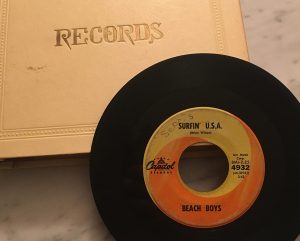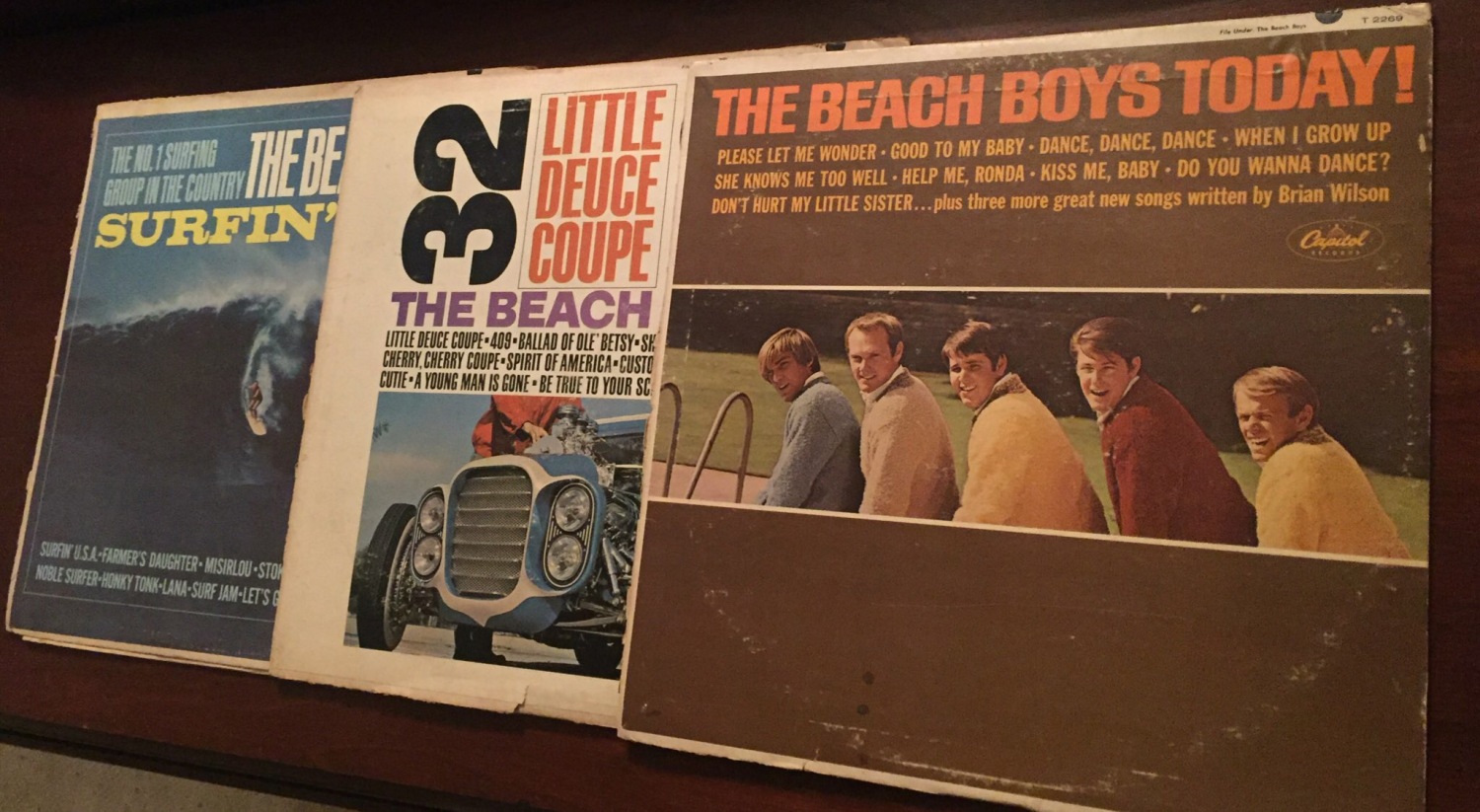Happy Birthday to one of the best albums ever produced. Pet Sounds is 52 years old today.
So much has already been written concerning Brian Wilson, The Beach Boys and Pet Sounds, but I can’t help myself. Here’s a listening guide I wrote during college, edited for length, about the world’s saddest song.

***
“Wouldn’t It Be Nice” by the Beach Boys Is The Most Depressing Song of All Time
“Wouldn’t It Be Nice,” written by Brian Wilson, Tony Asher and (supposedly) Mike Love, evokes a sense of innocence and mainstream conventions about sex and relationships that America subscribed to during the 1960s, according to Judy Kutulas in an article in the Journal of American History. This song embodies the classic multiple-part harmonies that made the Beach Boys famous. This song holds a homophonic musical texture with the soloist and background vocals harmonizing.
0:00-0:06 “Opener”
The classic opening to this song is made by an electric guitar. After the repeated chords, the song is soundly begun with a single, forte beat.
0:07-0:24 “First verse”
The song begins with the lines, “Wouldn’t it be nice if we were older/Then we wouldn’t have to wait so long/And wouldn’t it be nice to live together/In the kind of world where we belong.” The singer begins alone with the accompaniment of the backing instruments.
0:25-0:34 “Chorus 1”
The rich, distinctive harmonies can be first heard here. With the background vocals first vocalizing on “Ooh,” then transitioning to the lyrics. The lyrics read, “You know its gonna make it that much better/When we can say goodnight and stay together.”
0:35-0:50 “Second verse”
The second verse begins with soloist and background vocals. The background vocalizes alongside the soloist with “Ooh” and “Bop.” The lines read, “Wouldn’t it be nice if we could wake up/In the morning when the day is new/And after having spent the day together….” Different from the first verse, the second uses the rich vocal harmonies that the chorus makes use of.
0:51-1:04 “Chorus 2”
With the same lyrical pattern and melodic pattern as the first chorus, the lines read, “Happy times together we’ve been spending/I wish that every kiss was never-ending.” The singer ends this chorus and moves into the bridge with a wistful, “Wouldn’t it be nice.”
1:05-1:20 “Bridge”
This portion carries the song to the end. The lines read, “Maybe if we think and wish and hope and pray it might come true/Baby then there wouldn’t be a single thing we couldn’t do.” This portion of the song abandons the swing tempo that it previously used. The tempo slows, and the background vocals become legato.
1:21-1:30 “Call and response”
This portion of the bridge is worth pointing out because of the call and response aspect used by the writer to solidify the overall theme. They read, “We could be married (we could be married)/And then we’d be happy (and then we’d be happy).”
1:31-1:42 “Interlude”
A vocalizing interlude is used here to bring the song into the final chorus. The background singers and instrumentation slows to build up again in the last refrain. A mixture of “Oohs” and “Bahs” are used.
1:43-2:00 “Last chorus”
The last chorus’ tempo slows from the interlude and includes the soloist first and then the background vocals harmonizing behind him. The lines read, “You know it seems the more we talk about it/It only makes it worse to live without it/But lets talk about it/Wouldn’t it be nice.”
2:01-2:32 “Vocalizing”
From the last chorus, the soloist and background singers end the song with vocalizing and repeating the phrase, “Goodnight my baby/Sleep tight my baby.” The song ends with different vocalizations like “Ooh” “Run, Run, Wee Ooh.”
Final Thoughts
If a listener isn’t paying close attention, she might find “Wouldn’t It Be Nice” to be happy. Use of this song in movies and television have lead us to believe that because of its upbeat tempo and almost constant, nonsensical vocalizations, it is shallow and vapid. Under the surface, however, it holds frustration and longing.
By looking at the lyrics alone, you see the sheer frustration that the singer feels. He feels trapped by society’s conventions of sexuality; he wistfully sings of how “nice” it would be to have a deeper, more physical relationship. In Charles Granata’s book, “Wouldn’t It Be Nice,” the song is described as one of innocence or, rather, a moving from innocence. By listening to the harmonies you can hear how the background singers stay in a gloomy minor key; this solidifies the singer’s wistful attitude.
The bridge is perhaps the most depressing part of all. As the singer attempts to convince himself that his dream is attainable, the song ends with a decision to stop talking about it altogether because “it almost makes it worse to live without it.” The vocalizations kick in again to end the song, but this time it seems forced with the repeated phrase: “wouldn’t it be nice.”
Sources:
Kutulas, Judy. “”That’s the Way I’ve Always Heard It Should Be”: Baby Boomers, 1970s Singer-Songwriters, and Romantic Relationships.” The Journal of American History 97, no. 3 (2010): 682-702. http://www.jstor.org/stable/40959939.
Granata, Charles L. 2003. Wouldn’t it be nice: Brian Wilson and the making of the Beach Boys’ Pet Sounds. Chicago, Ill: A Cappella Books.https://www.youtube.com/watch?v=nZBKFoeDKJo
***

If you haven’t listened to Pet Sounds yet, stop what you’re doing, and listen to the entire album now.
Even if you don’t like it, at least you can say that you’ve tried, and all the die-hards will shut up.
Then listen to Chuck Berry’s entire catalog because there would be no Beach Boys without him.
If you have embarked on the wild tour of Brian Wilson’s ego music, then you should listen to this parody of Pet Sounds made to sound like 8-bit music. Unfortunately, it’s not in Mono.
Enjoy!
